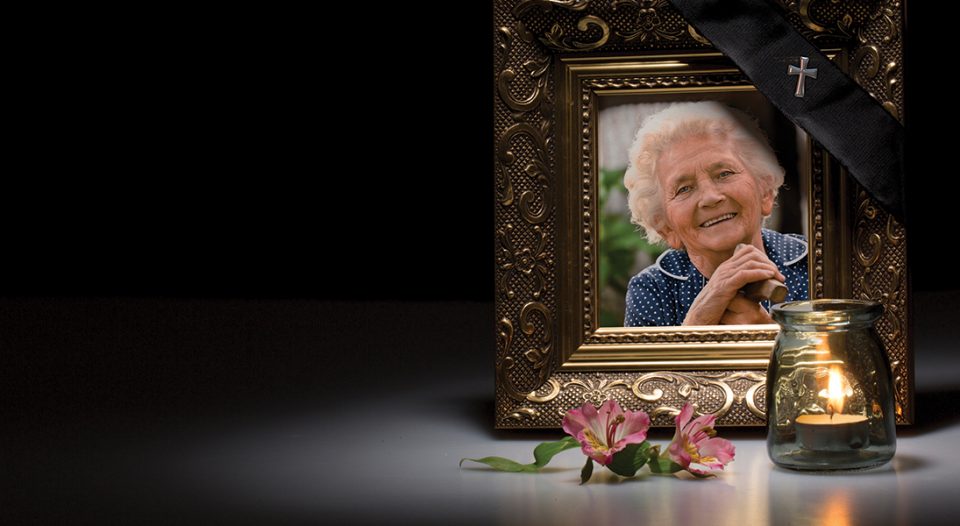Editor’s note: This article originally ran Oct. 29, 2018.
There is a lot of meaning packed into the word all in All Saints. Let’s explore the day through this simple word.
All includes some most beloved to us. All Saints calls to mind specific individuals: particular beloved faces, names and memories. On All Saints, your congregation might name in worship your loved ones who have died in the past year, alternating the names with a bell or a sung prayer of thanksgiving. Some congregations set aside places for photos of loved ones among candles and images of other saints. We may be all too aware of the particular names we are now carrying with us toward All Saints this year—names of those who have died in the past months.
All includes those beloved by others. All Saints creates a space that embraces with honor the multitudes of individuals among the beloved dead. We see their faces, say their names, and recognize in the worshipers around us others who carry their own memories and litanies of saints. All Saints sets out a place for all of them—an assembly the book of Revelation describes as “a number no one could count” with saints “from every nation, from all tribes and peoples and languages” (7:9). All Saints brings into focus our own beloved dead while also stretching our imagination toward the whole company of saints, more diverse and populous than we can fully comprehend.
All are saved by grace. The festival originally honored those who were considered especially holy: heroic figures from the Scriptures and martyrs who had given their lives nonviolently in witness to the faith. However, it is an especially Lutheran accent for the feast to honor not only those who lived exemplary lives, but all who have been baptized into Christ’s death. For Lutherans, All Saints resonates with the conviction that in Christ every saint is a sinner and every sinner a saint, simul justus et peccator. Lutherans especially remember on this feast that it is God’s grace, apart from our works, that makes us saints. We find lasting rest only in the mercy of God.
For Lutherans, All Saints resonates with the conviction that in Christ every saint is a sinner and every sinner a saint, simul justus et peccator. Lutherans especially remember on this feast that it is God’s grace, apart from our works, that makes us saints. We find lasting rest only in the mercy of God.
We share a mortal, earthy nature with all humans and all living creatures on the planet. Death is an inevitable part of life for all of us. It is part of our citizenship as earth creatures. In the Bible’s wisdom literature, the word all is like a bell ringing to remind us of the lesson of Ash Wednesday: The fate of humans and the fate of animals is the same; as one dies, so dies the other. They all have the same breath …. All go to one place; all are from the dust, and all turn to dust again (Ecclesiastes 3:19-20). John’s Gospel uses seed imagery: Unless a grain of wheat falls into the earth and dies, it remains just a single grain; but if it dies, it bears much fruit (12:24). All Saints proclaims a mystery. We remain in communion with those who have returned to the earth ahead of us.
We wait with all creation. All Saints is commemorated when much of the North American landscape appears to be dying down. Days are shorter, tree branches are becoming bare, the air is colder and fields have been stripped of their harvest. November begins a cycle of readings extending through Advent in which the themes of death and danger are in dialogue with our deepest hopes. As the sun sinks lower in the sky each day, our Scripture texts help us seek answers to a searing question: “How can we live in hope and integrity when it looks like the end of the world?” All Saints begins a season in which we contemplate the hopes and fears of all creation, watching and waiting for signs of a new day dawning for all of us.
The themes of All Saints extend into all of Christian life. We call to mind every Sunday the great company of saints as we join their unending hymn around the communion table. We bear witness to new saints being born from the baptismal waters. Perhaps we visit a cemetery on the anniversary of a death or on other church festivals. Many congregations include every week a final petition in the intercessions giving thanks for the lives of saints who died during the week in this or a past year. Some Christians are rediscovering natural burial as a way to honor our return to the earth in hope alongside all living creatures. And every time we see the sign of the cross or trace it on our bodies, we remember the one whose death and resurrection has formed this company of all the saints, hallowing all our lives and deaths.
All Saints reimagines the world—all of it. Even in death, God is making all things new.





